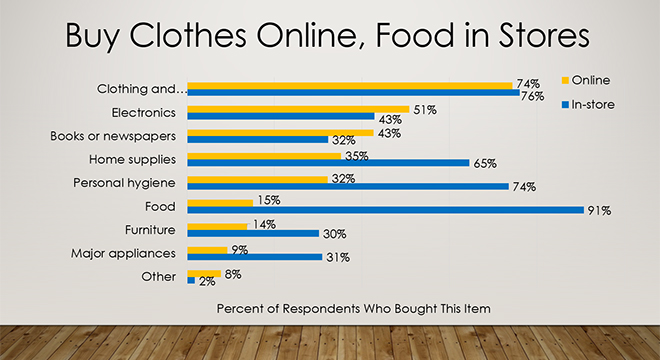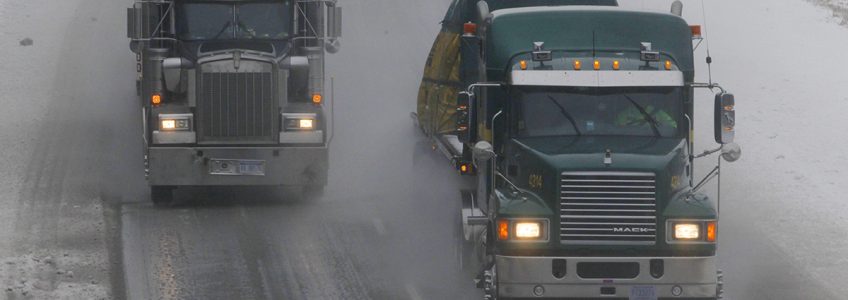Winter Deep Freeze Will Affect the US Economy
A winter storm sweeping the U.S. East Coast after a week of very low temperatures is probably boosting demand for boots and mittens — and thanks in part to its timing, it shouldn’t chill economic data more broadly.
Home sales and spending at restaurants could see a short-term dip, but against a backdrop of steady demand and a solid economy, that should amount to little more than a blip. And other businesses, such as utility providers and food-delivery companies, will benefit.
The winter storm and chill are hitting before the Department of Labor’s reference week for employment data, so the effects probably will have little impact on jobs figures. And because the weather disruption comes just after the winter holidays, the freeze isn’t choking off in-store shopping during a crucial season.
Still, unusual temperatures and storms can cause major disruptions if protracted, so all bets are off if the cold snap and snowy weather persist for longer than currently forecast. And even if the deep freeze is short-lived, it could become a convenient scapegoat for any first-quarter economic weakness, which has been chalked up to seasonal-adjustment issues or bad weather in recent years.
“Within a quarter or two, any weakness in the first quarter data will be blamed on this week,” said Michael Hanson, chief U.S. macro strategist at TD Securities in New York. “I am not a big believer in these weather stories, but they’re extremely popular in the markets.”
Cozy Up
Americans’ demand for cold-weather products has probably spiked in first week of January
Winter storm warnings covered parts of 13 eastern states on Jan. 4, while blizzard warnings applied to the U.S. coast from North Carolina to Maine, including New Jersey, Long Island and Boston. Governors in several states had declared emergencies. Many in Virginia had lost power, and thousands of flights were grounded.
While temperatures well below freezing are expected in the Northeast through the weekend, by Jan. 8 things should warm up — just in time for the Bureau of Labor Statistics’ reference week, which is always the calendar week or pay period containing the 12th. Survey data covering that particular period form the basis for the January employment report, due Feb. 2.
“I suspect it probably won’t have too much of a lingering impact,” said Omair Sharif, senior U.S. economist at Societe Generale in New York. He said housing starts could be softer, but only temporarily. Retail sales data could take a small hit, but that should get made up quickly, he said.
Timing is on the side of retailers.
“It’s a huge difference that this is happening now, versus last week or the week just before Christmas,” said Evan Gold, executive vice president of global services at Planalytics, a Berwyn, Pennsylvania-based company that traces weather-related business trends.
Planalytics expects restaurant traffic in the Northeast to be down 10% from the usual level in the first week of January, but spending on things like hats, boots and heaters will be up in the North and the nation as a whole.
“The losers would be anything that’s discretionary that would require people to go out of their house,” Gold said. Still, even those businesses suffering a hit will only have to put up with short-lived pain.
Amazon Rival JD.com Built the Equivalent of Monaco in Warehouse Space in Three Months
D.com Inc. added so much warehouse space in three months that the new construction could cover just about every inch of Monaco, a pace of expansion that rivals growth at Amazon.com Inc.
China’s second-largest e-commerce service added 2 million square meters (21.5 million square feet) of warehouse space from July to September, about equal to the span of the city-state famed as a getaway for the rich. It ran 405 warehouses encompassing 9 million square meters at the end of September — adding about a warehouse every one to two days. December-quarter data won’t be available till JD reports results, which aren’t expected till at least next month.
JD builds and runs its own nationwide logistics chain, a costly approach that’s weighing on profitability but that it believes is crucial to competing against larger arch-foe Alibaba Group Holding Ltd.
Millennials Upset E-Commerce Assumptions
he common assumption that millennials only shop online and avoid brick-and-mortar merchants just doesn’t fit their behavior patterns, according to a survey from a Texas A&M Transportation Institute researcher.
The purchasing behavior of millennials — who now account for about 25% of the population — impacts freight policy, trade, economic trends and infrastructure, said Sarah Overmyer, assistant transportation researcher at TTI, who presented her results at the Transportation Research Board’s annual meeting here.
She disputed the notions that millennials are glued to their smartphones, rent a place in a city and need immediate delivery of their online purchases, and pointed to delivery trends to make her case.
“If this were true, cities would be more congested. And if [millennials] made all their purchases online, it would disrupt freight patterns,” Overmyer said. “If they did demand ASAP delivery, then trucks would be performing gymnastics to respond.”

And the growth of e-commerce has a direct bearing on the trucking industry. In the third quarter of 2017, retail e-commerce sales in the United States came in at $115.3 billion, a rise of 15.5% from the same period in 2016, according to the Census Bureau. E-commerce sales in the third quarter accounted for 9.1% of all retail sales. To better understand millennial e-commerce purchasing, Overmyer conducted a panel survey of 1,310 18- to 34 year-old Texans, gathering demographic data and questioning them on their shopping preferences and online behavior.
Online shopping was part of their everyday lives as 68% of those surveyed said they had received an online package in the past week. However, 75% of those packages had arrived three days or more after ordering.
That shoots down the assumption on immediate delivery, Overmyer said. Further, only 45% of those surveyed were members of the Amazon Prime service that promises two-day delivery on certain purchases.
And most millennials, 75%, made purchases both online and in-store; just 14% were online only shoppers, while 7% were exclusively in-store shoppers. About three-quarters of respondents bought clothing online and in-store, while 74% preferred to buy personal hygiene products in-store, and 91% bought food in a grocery store.
Census Bureau data from 2015 shows that about 29% of Texas millennials live with their parents or another relative, but that doesn’t mean that they cluster in cities.
Overmyer found that about 66% live in the suburbs. And they want to put down roots; nearly half plan to buy a home in five years, with 50% wanting to be in the suburbs, 26% in an urban area and 23% in a rural area.
“The survey shows that millennials may not be as different as we thought,” Overmyer said. “They live in the suburbs, they shop in stores, and they don’t require two-day delivery.” She added, “Still, two-thirds got an online delivery in the last week.”

